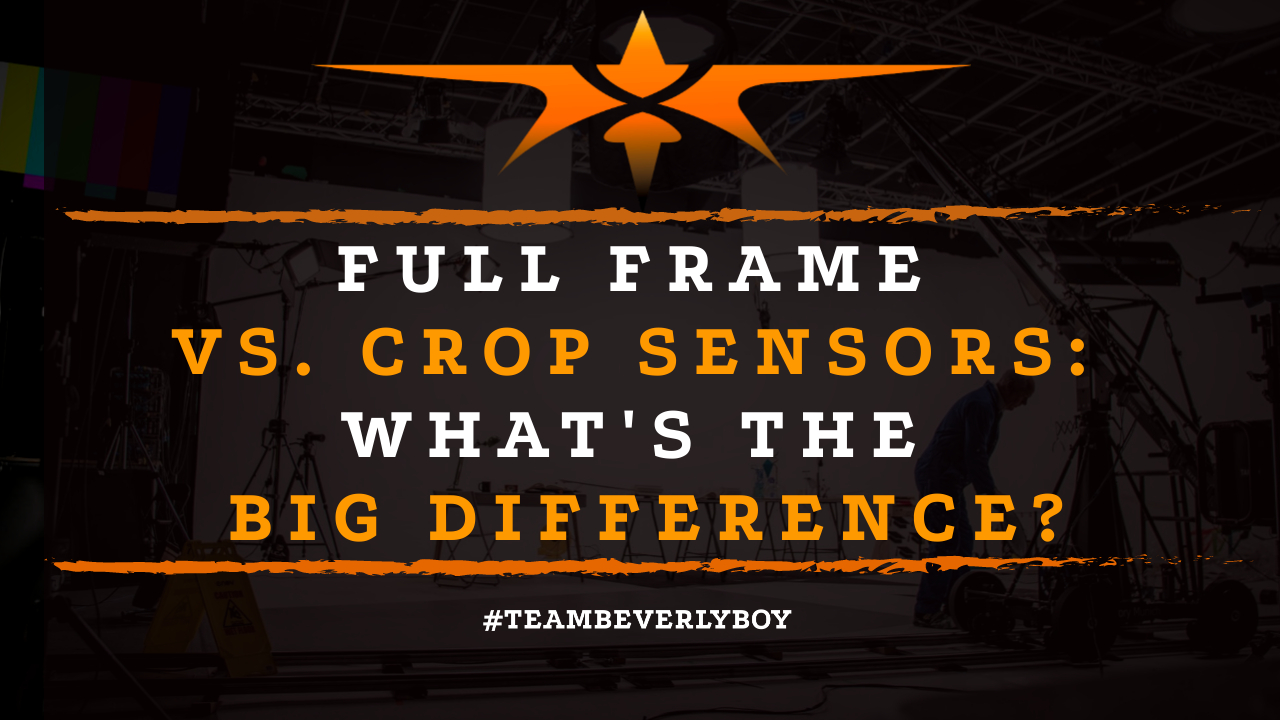
Full Frame vs. Crop Sensors: What’s the Big Difference?
Whether you’re an aspiring cinematographer or a seasoned veteran cameraman, choosing the right camera and equipment can really have you confused and overwhelmed. Everything about the camera matters in a different way, and all of the equipment is so incredibly versatile. Right down to the camera sensors which happen to come in various sizes and can dramatically impact your footage. Two common references are made as to the size or types of camera sensors being used including full frame vs. crop sensors, but what does this all mean? And what’s the right choice?

Deciding between a full frame sensor vs a crop sensor is certainly an important decision for you to make, and you’ll want to make it before you invest in a camera. But before you can decide, you’ve got to learn about the difference between the two.
What is a Full Frame Sensor?

Full frame references the camera sensor size that represents the same dimensions of standard 35mm film format.
Full frame sensors are sometimes referred to as “standard” sensors because the 35mm film format has been the standard in film since 1909 and thanks to the relationship between cost and overall quality of images that are produced with 35mm film, it has continued to be the standard for over a century.
What is a Crop Sensor?

Crop sensor refers to a camera sensor that is smaller than a full frame sensor. Crop sensors are used on APS-C and micro 4/3 systems. Think of the crop sensor as filling a smaller area of the viewable field or the film, almost as if there was a frame around the cropped area.
(More on that in a minute…)
Full Frame vs. Crop Sensor Differences
The greatest difference between full frame vs crop sensors is the fact that crop sensors provide a smaller field of view compared to the full frame, it’s a “cropped” view.
So for example, if you use two cameras, one will have a full frame sensor and one with a crop sensor, and take a picture there will be distinct differences. The field of view and the focal length between the full frame vs. crop cameras are going to be different.
Even if you stand in the exact same location, take the exact same photo from the same distance and with the same lens and point of view. The full frame camera is going to capture a larger field of view, the crop sensor is going to capture a tighter field.
It’s almost as if you cropped an image from the full frame.
Crop sensor cameras have a multiplier that represents the measurement of the difference in the field of view or focal length.
For example, a camera that has a 50mm f/1.4 lens attached with a crop sensor and a multiplier of 1.5x, the focal length will be effectively multiplied by 1.5 so instead of 50mm essentially acting like a 75mm lens would on a full frame camera.
What’s Best?
That’s a matter of preference. Some cinematographers can make their own decisions between a full frame vs crop sensor camera based on their own individual needs.
Technical details aside, full frame sensors provide improved overall image range with excellent low light settings and great ISO performance.
Likewise, a crop sensor may lack the level of integrity in terms of quality, but they are incredibly affordable and ideal for those with a very tight budget.
They’re especially useful in shooting action and are often the chosen in early cinematography but again, deciding between full frame vs. crop is a decision that should be made independently.


